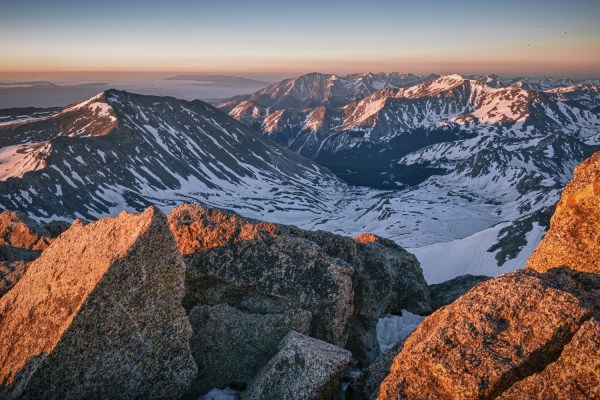Mount Columbia might just be the most hated of Colorado’s 54 fourteeners (“14ers”), mountains that rise to an elevation of 14,000 feet or greater. Located in Colorado’s beautiful Sawatch Range, ten miles east of Buena Vista and a two-hour drive southwest of Denver, Columbia is one of the Collegiate Peaks that overlook the Arkansas River Valley.
From the 14,073-foot summit, you can see its 14,000-foot Ivy-League brethren: Mounts Yale, Princeton, and Harvard, among others. Yet, regardless of its stunning vistas, Columbia has a notoriously bad reputation for its slog to the top best described by author Mark Obmascik in his book, Halfway to Heaven. A grant support letter describes the conditions of the trail:
“There is no path in the Colorado high country that is worse than the “trail” up Columbia. It is a mess. It is scree atop powdery dirt that is all rutted into a crumbling 30-degree slope … That, at least, is a technical description. In non-technical terms, this trail sucks. It is 1,600 vertical feet of misery. Climb three steps forward and slip two steps back. It feels like walking on greased marbles, except that these marbles have sharp edges and wedge inside your sock and prick your sole. More swear words have been uttered by hikers climbing Mount Columbia than any other Colorado 14er. This mountain twists ankles, skins knees, and shreds bottoms of pants.”
Why is it so bad? When people started climbing 14ers, engineered trails didn’t exist. Most routes were user-created and being very steep have become severely eroded, often causing harm to native plants. Mount Columbia in particular necessitates climbers to target stable patches of scree fields in order to summit—and to avoid falling and cutting oneself on the way down. Sensitive flora is often trampled.
Colorado Fourteeners Initiative (CFI) has been building and restoring trails on Colorado’s 14ers since 1994. Of the twenty-nine routes CFI has completed on twenty-six 14er peaks, Columbia is one of the most complex projects CFI has ever faced because of the steep, loose mountain conditions and lack of suitable building materials near the future site of the trail. The work will start at 11,700 feet—higher than the highest points in 38 states—and will be done using primitive hand tools and native rocks.

“We are trying to change the mountain’s reputation to make it a wonderful summit to climb,” says Lloyd Athearn of CFI, “Many people want to climb all of the 14ers. Are we going to let this happen on loose unplanned trail that goes over rare plants or are we going to give them a sustainable route?”
Scour the records on 14ers.com, where enthusiasts who climb Colorado’s 14,000-foot mountains tick off summits on virtual checklists, and you’ll see that nearly 1,600 people have summited Columbia. That’s about twenty-seven percent of everyone who has entered their checklist into 14er.com. It’s a middle-of-the-pack mountain, which is why other 14ers have superseded it in terms of priority. The wait is over. CFI and the U.S. Forest Service are committed to creating a better route by October of 2017.
By 2017, CFI will create sustainable trail including switchbacks up a more logical shoulder of the mountain. The trail will still have a good grade so that climbers can move quickly to avoid Colorado’s infamous thunderstorms, but it will traverse a bit more to ease the steepness and minimize erosion. A second phase, starting in late 2017, will start at 13,000 feet, reconstructing the trail to the summit. In 2020, CIF will work to close and restore the existing route.
Mount Columbia is a key summit along several notable trails and endurance events. It’s one of the 14 peaks along “Nolan’s 14,” a non-competitive endurance run that links together all of the Sawatch Range 14ers—a feat that must be completed within a 60-hour time limit. In addition, the Colorado Trail, the 500-mile-long backpacking trail that runs from the southern suburbs of Denver to Durango, traverses the eastern base of Columbia.
REI will donate $5.9 million in 2015 to help care for and increase access to more than 1,000 outdoor places in the U.S. Get involved: https://www.rei.com/trails.
